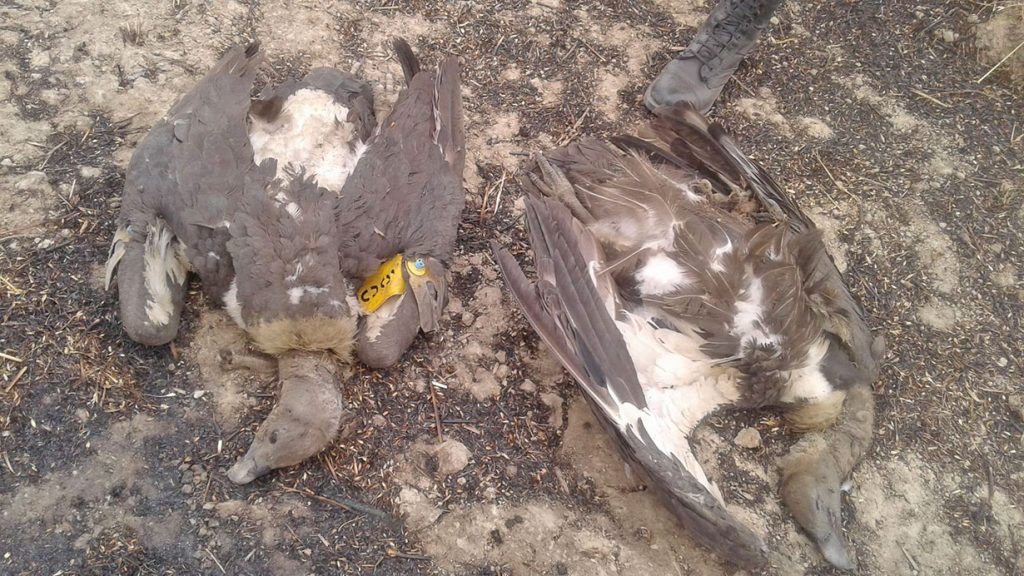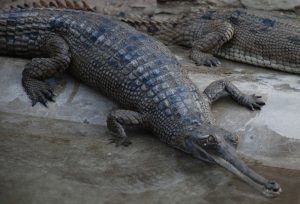A few days ago, over 60 vultures of different species were found dead near a local pond in Ramgram municipality-4 of Nawalparasi. It is suspected that these many protected vultures died at once after feeding on the carcasses of dogs killed by poisoning.
Among those vultures, 33 were endangered white-rumped vultures, 31 were Himalayan griffon, two cinereous vultures, and one slender-billed vulture. This incident has made conservationists worried about the conservation of the vultures.
Added challenge to conservation
Nepal has achieved success in re-increasing the populations of several species of vulture in nearly two decades. A vulture conservation and breeding centre is also in operation at Kasara in Chitwan. The centre, established in 2008, is run by the Department of National Parks and Wildlife Conservation (DNPWC). Since the establishment, the centre has sent over 30 vultures to their natural habitat.
Likewise, a five-year periodical plan was made in 2009 as an effort to save vultures and two such plans have already been completed. However, even before the third five-year plan was implemented, this incident happened.

DB Chaudhary, the coordinator of Jatayu Vulture Restaurant, a vulture-feeding zone in Pithauli, says incidents like this have been a serious setback in vulture conservation efforts.
He questions, “If such negligent incidents happen time and again, how long will it take to kill 500 to 1,000 vultures?”
According to him, vulture conservation is more complicated than others as they feed on carrion. His restaurant, started in 2006, feeds the vulture non-toxic diets (old cattle after they die).
Initially, a maximum of 70 vultures was seen at one time, but now the number of vultures has escalated to 334 in the restaurant area. Consequently, such feeding centres have also started operating in Kailali, Kaski, Rupandehi, Dang, and Sunsari districts. However, this incident has caused a huge loss to vulture conservation and campaigns and made vulture’s conservation more challenging, say conservationists.
The practices of burying clean carcasses, throwing poisoned animals’ carcasses in open, doing activities that would affect the vulture’s habitat are also dangerous, shares Chaudhary.
Need for a change
Vultures, one of the world’s endangered birds, are seen as planet Saturn’s vehicle in the eastern world. They are also considered as nature’s allies because they play a major role in containing the spread of diseases such as diarrhoea, cholera, measles, and anthrax.
However, vultures have a bad reputation in Nepali society as they are despised as dirty and inauspicious. An ornithologist and conservationist, Som GC, views, “The commonly used term in Nepal ‘giddedristi’ (that means a vulture’s perspective) to suggest excessive greed has created a very negative image of the vulture. It is important to understand the advantages of conserving vultures by removing such stereotypes.”
In addition, GC says that unless people acknowledge its significance, the conservation efforts cannot be effective. He also stresses the role of local governments to eliminate mass deaths of vultures.
Likewise, senior ornithologist Hem Sagar Baral views the entire community should make efforts to save the endangered vultures. “Vultures cannot be protected by keeping them in a confined space like a rhinoceros as it flies everywhere,” he says.
Therefore, the vulture conservation area itself should be large and the communities themselves should be sensitive to this nature’s ally, explains Baral.
According to him, vultures in Nepal have been in crisis since 1990. At that time, it was estimated that there were about 1.6 million vultures in Nepal. By 2000, however, the number of vultures had dropped by 90 per cent to less than 20,000, after which the vulture conservation campaign started.
Biggest danger of drugs

According to Baral, a study was conducted after the sudden decline in the number of vultures in South Asia. It was identified that diclofenac, medicine farmers used as a painkiller for their cattle, was the main cause. Likewise, it was found that the inner organs of vultures that scavenged on carcasses of the cattle that were given diclofenac medicine were damaged.
“One vial (30 ml) of diclofenac could kill 350 to 800 vultures,” says Baral. Hence, a conference of conservationists in Kathmandu launched a campaign to stop the use of diclofenac in 2006. Currently, all districts of Nepal except Kathmandu are diclofenac-free.
But, the threat is not over yet. Medicines that are still in use such as nimesulide, aceclofenac, and ketoprofen are also deadly to vultures. “Despite the ban on harmful drugs, poisons used to kill livestock and wild animals are still a challenge for vultures,” says conservationist Chaudhary.
The ways to conserve
At present, conservation programmes in Nepal are focused on the Terai region only, but they need to be extended to the hilly and mountainous regions as well, Chaudhary suggests.
Similarly, there should be effective monitoring of the use of banned drugs for cattle and it should stop ultimately. Ornithologist GC recalls that he once went to different districts and distributed another safer medicine for free to stop the sale of drugs such as diclofenac.
He stresses, “Community-based conservation campaigns are now essential to create an environment where vultures do not lack food that is free from such poisons.”
“Stakeholders need to work together to raise public awareness for the conservation of vultures,” he adds, “Many vultures could have been saved if the news of vultures in Ramgram had come a day earlier, but the success of conservation so far has been jeopardised due to the lack of awareness in the community.”





















